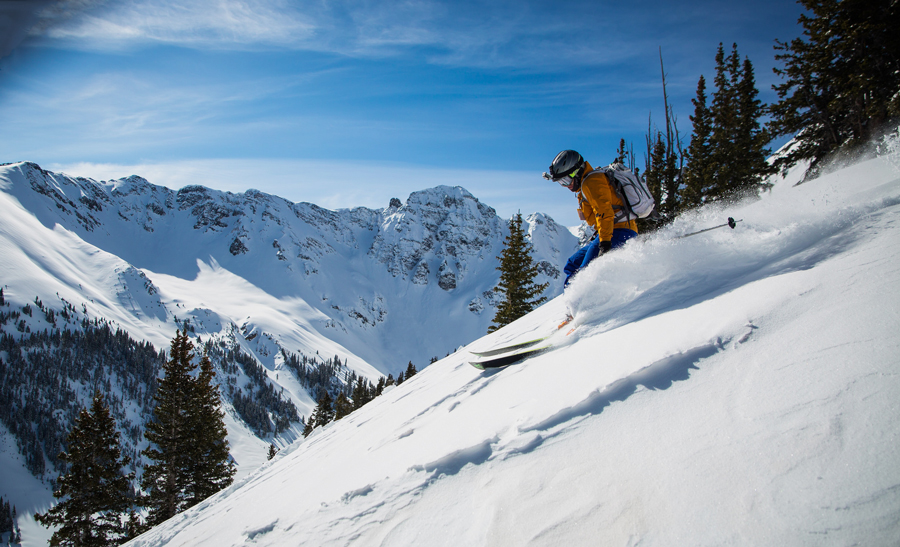Winter Wonderland: Enjoy Seasonal Sports Safely

The weather can be fickle in the Northeast. We’ve had years when snow began piling up in October (remember 6.5 inches on October 4, 1987 in Albany, N.Y.?) to times when the idea of a white Christmas seemed like a distant dream (thanks, El Niño!).
No matter when the flakes fly, winter sports enthusiasts are ready to hit the slopes, trails, and frozen ponds as soon as the chilly air settles in.
If you are among those planning to partake in all that New York state has to offer this winter season, keep safety top of mind before grabbing your gear and heading outdoors.
There are precautions you should take in the cold weather – this includes dressing properly. Wear layers that can be easily removed if you start to sweat. Using the right combination of clothing made of the proper materials can help you avoid losing body heat. Don’t forget to protect your hands, head, ears, and feet. Keep extra hats, gloves, socks, and boots on hand to swap out wet ones for dry.
Know the signs of hypothermia (such as shivering, exhaustion, confusion, slurred speech) and frostbite (numbness and skin that is white or grayish-yellow and feels unusually firm or waxy) and how to treat them. Immediate medical attention may be needed. Check out the Centers for Disease Control and Prevention infographic below for more information on handling these conditions.
While protecting yourself from the cold temperatures seems obvious, many people often forget to safeguard their skin from the sun in the winter. Remember to cover your exposed skin with adequate amounts of sunscreen, especially if you are at higher elevations (such as on a mountain). Wear glasses or goggles that block UV rays to protect your eyes. If you are out after dark, make sure your clothing has reflective material.
Now that you are warm and dry on the outside, be sure you are hydrated on the inside. Drink plenty of fluids, avoiding alcohol (which can impair your judgment and prevent your body from regulating its temperature) and caffeine (which constricts blood vessels and speeds up heat loss). Pack healthy snacks, such as trail mix or string cheese, to help you fuel up while you are on the go.
Stay Safe and Have Fun Whether you ski, skate, or snowshoe, keep in mind that every winter sport has the potential for injury. Broken bones, concussions, and sadly, fatalities, are a part of winter activities. There are, however, specific safety measures you can take to reduce your chance of injury.
Skiing/Snowboarding Helmet use, especially for children, is recommended. While they have been shown to be more effective at slower speeds, helmets still add a layer of protection for skiers and snowboarders. There are different types of helmets depending on your activity. Check the Consumer Product Safety Commission website for a list. Don’t forget to do an annual equipment check to make sure that your bindings and poles are in good working condition.
You should also be aware of the conditions. This means familiarizing yourself with the terrain, avoiding potential avalanche areas, and watch weather reports for upcoming storms. Always stay on marked trails that are at your skill level.
Sledding/Tubing/Tobogganing Finding that perfect sledding hill can be the highlight of the winter season, but with thousands of injuries reported each year, you should always be mindful of the potential hazards.
As with skiing and snowboarding, it is highly recommended that helmets be worn, especially for children, and make sure your equipment is in good working order. Additionally, watch for rocks, holes, icy spots, and trees or small brush that may be in your path. Sled facing forward – never face first – and never sled on public streets. Children should always be supervised by an adult.
Ice Skating/Ice Hockey The lure of a frozen pond is tempting for ice skaters, but before you lace up those skates, follow these recommendations from the National Safety Council:
- Always wear a helmet.
- Wear skates that fit properly and have good ankle support.
- Get your blades professionally sharpened each season.
- Never skate on thin ice – check for cracks, holes, and debris and never ignore warning signs.
- Consider taking lessons to learn some basic skills.
- Never skate alone.
Snowshoeing/Cross-Country Skiing/Hiking A major perk of living in upstate New York is the abundance of beautiful hiking trails that are accessible year-round, especially in the Capital Region, Hudson Valley, and Adirondacks. To make your trek safe and more enjoyable, watch for weather advisories, stay on the marked trails, and don’t overexert yourself.
As with the other activities, you want to make sure your equipment is not broken or worn. Let others know where you will be in case your party gets lost or you get separated. Dress appropriately for the conditions with the correct footwear, and be sure to pack an adequate amount of food and water.
Ice Climbing The mountains of New York state provide spectacular opportunities for ice climbing. Scaling a slick chunk of frozen beauty is a skill that requires training by experienced guides and quite a bit of safety equipment, including a helmet, climbing boots, a harness, and more. The NYS Department of Environmental Conservation offers a guide to ice climbing, including safety tips for those wishing to expand their adventurous horizons.
No matter your sport, keep these safety tips in mind so you can get out there and enjoy the season – as soon as those temperatures begin to fall and the snow starts to fly.
 The Daily Dose
The Daily Dose

Comments are closed.